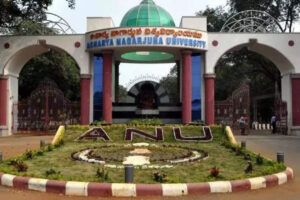Daily News Analysis – 13 June 2025
Air India Plane Crash in Ahmedabad: A Wake-Up Call for Indian Aviation
The crash of an Air India Boeing 787 into a college hostel in Ahmedabad, resulting in over 200 fatalities, marks one of the darkest days in India’s aviation history. The Aircraft Accident Investigation Bureau (AAIB) has launched an inquiry with the recovery of both black boxes, which will reveal critical data and cockpit voice recordings. India, now the world’s third-largest domestic aviation market with over 152 million passengers in FY 2023-24, is grappling with structural challenges including a duopoly market (IndiGo and Tata Group), financial instability, algorithmic pricing, regulatory inefficiencies, and safety oversights. This tragedy necessitates urgent reforms across aviation safety, operational transparency, and institutional capability, particularly within DGCA, AAIB, and BCAS.
Global Gender Gap Index 2025: India Slips to 131st Rank
The World Economic Forum’s 19th Global Gender Gap Report reveals sobering trends. Globally, 68.5% of the gender gap has been closed, led by Nordic countries like Iceland, Finland, and Norway. India’s rank slipped to 131 out of 148, despite scoring well in education (97.1%). Political empowerment saw a dip with women in parliament dropping to 13.8%, while economic participation remains at 40.7%. India lags behind regional peers like Bangladesh and Nepal, underscoring the need for systemic interventions to address wage disparities, female labour force participation, and political representation. With full parity projected to take 123 years globally, India must expedite inclusive governance and economic integration of women.
India’s Growth Paradox: The GDP Mirage vs. Ground Realities
Despite becoming the world’s fourth-largest economy with a GDP of $3.9 trillion, India’s per capita income remains $2,800 — far below regional peers like Vietnam and China. The top 1% control over 40% of wealth, and India ranks 111th in the Global Hunger Index and 134th on the Human Development Index. The paradox lies in high nominal GDP growth without parallel improvements in living standards, nutrition, and employment. With 80 crore Indians dependent on free rations and 230 million living in multidimensional poverty, policy makers must reorient growth metrics towards equity, sustainability, and HDI-based assessments.
Moody’s Downgrade and the U.S. Fiscal Challenge: Global Ripple Effects
Moody’s recent downgrade of U.S. Treasury bonds due to rising debt (now over 120% of GDP) and political gridlock reflects waning global confidence in the U.S. economy. Central banks are gradually diversifying reserves into gold, euros, and digital assets. For India, this serves as a cautionary tale. With debt nearing 80% of GDP and rising fiscal populism, India must recalibrate its strategies toward long-term investments in infrastructure and productivity, while avoiding electoral freebies and unsustainable subsidies. The global financial architecture is slowly shifting, and India must remain fiscally prudent in response.
India’s Rare Earth Magnets Crisis: Strategic Vulnerability Exposed
China’s export curbs on rare earth magnets have sent ripples through India’s EV, defense, and electronics sectors. While India holds rare earth reserves, it lacks refining infrastructure and downstream magnet manufacturing capacity. Critical magnets like Neodymium and Samarium Cobalt are indispensable for EV motors, power steering systems, smartphones, and missiles. India must invest in refining technologies, incentivize private sector participation, and build a strategic stockpile. Strengthening R&D and initiating international collaborations under frameworks like the Quad are essential to secure supply chains for critical minerals.
The Science of Setting the Right AC Temperature: Health and Energy Synergy
The Ministry of Power is revisiting a proposal to mandate that air conditioners operate between 20°C and 28°C. This move addresses two pressing issues: energy efficiency and public health. Most power in ACs is consumed during the compression phase, and setting thermostats above 24°C can save up to 20 billion units of electricity annually. Moreover, temperatures below 18°C have been linked to respiratory, cardiovascular, and mental health issues, particularly among vulnerable populations. Studies by WHO and Bureau of Energy Efficiency (BEE) support the initiative. With India adding 10–15 million ACs annually, regulation is both timely and necessary.
India’s First Interpol Silver Notice: CBI Cracks Global Crime Trail
The Central Bureau of Investigation (CBI) has secured India’s first Interpol Silver Notice in connection with the French embassy visa fraud case. The Silver Notice helps track illicit assets parked abroad. This tool adds to India’s arsenal against financial crimes and aligns with international norms for tracing proceeds of transnational frauds. The notice was enabled through India’s National Central Bureau and the BHARATPOL portal, which enhances real-time international law enforcement coordination.
PM GatiShakti Plan: Infrastructure Acceleration via Multi-Modal Integration
The 95th meeting of the Network Planning Group under PM GatiShakti reviewed infrastructure proposals in rail, road, and logistics. The initiative, launched in 2021, brings together Bharatmala, Sagarmala, UDAN, and other flagship schemes under a unified planning framework. It aims to break ministerial silos, reduce project duplication, and enhance last-mile connectivity. Its data-backed GIS portal now plays a critical role in evidence-based planning, making India’s infrastructure push more efficient and transparent.
RBI’s Bond Buyback: Liquidity Infusion for a New Fiscal Strategy
The Reserve Bank of India conducted its second bond buyback of FY26 to inject liquidity into the banking system. This mechanism allows the government to repurchase outstanding securities before maturity, easing pressure on fiscal operations. In a climate of tightening global interest rates and volatile capital flows, such proactive liquidity management enhances financial system resilience and encourages long-term lending.
Mayday Call: Understanding Aviation’s Ultimate Distress Signal
An Air India pilot recently issued a “Mayday” distress call while en route to London, triggering immediate ATC response. The term, derived from French “m’aider” (help me), is used globally to indicate life-threatening emergencies. The protocol mandates triple repetition (“Mayday, Mayday, Mayday”) and activates a hierarchy of emergency response services. While often misunderstood, this call remains a vital pillar of aviation and maritime safety.
CROPIC: AI and Farmer Photos to Drive Smart Crop Insurance
The Ministry of Agriculture will soon launch CROPIC (Collection of Real Time Observations & Photo of Crops) to transform crop monitoring. Farmers will submit geo-tagged photos using a mobile app during different growth stages. AI tools will analyze these to assess crop type, stage, and damage levels. Integrated with PM Fasal Bima Yojana, this real-time data will improve insurance accuracy, reduce fraud, and enhance disaster compensation efficacy. It marks a shift towards digital-first governance in agri-risk management.
Emperor Penguins: Climate Change Threatens Antarctica’s Icons
Early ice melt in Antarctica is endangering Emperor Penguin populations, whose breeding cycles depend on stable sea ice. With colonies spread across the Ross and Weddell Seas, their survival is threatened by rising temperatures, reduced ice thickness, and ocean turbulence. The IUCN lists them as Near Threatened. Their plight illustrates the broader ecological impacts of climate change and the need for global cooperation on Antarctic protection and carbon emissions control.
Exercise Shakti-2025: Strengthening Indo-French Military Interoperability
The 8th edition of Exercise Shakti-2025 between India and France will take place at La Cavalerie, France. Aimed at enhancing joint operational capability in sub-conventional warfare scenarios under UN mandates, this exercise is a testament to the deepening Indo-French strategic partnership. It complements naval (VARUNA) and air force (GARUDA) drills, reinforcing comprehensive bilateral military synergy across domains.
Source link



